Interest rates, and more specifically the growing certainty of higher rates to come, have been dominating headlines following the announcement of a new trade agreement between Canada, the U.S. and Mexico.
With the expectation of rising interest rates, many eyes are also on the developments in the real estate market, particularly in the Greater Toronto and Vancouver areas. This week we received new home sales data showing diverging paths for these cities.
Here is this week’s roundup of the latest mortgage and real estate news:
USMCA and the Coming Interest Rate Increases
The Bank of Canada may have just received the green light it needed to move forward with its desired interest rate increases over the remainder of this year and into 2019.
The new United-States-Mexico-Canada Agreement (USMCA), which replaces NAFTA, finally removes the uncertainty that clouded Canada’s trade future with its biggest trading partner.
“For the BoC, this clearly gives them a green light to hike in October and does bump the odds of further rate hikes over the year,” BMO chief economist Douglas Porter wrote in a recent note. “While rate hikes will likely stay gradual, the pace may pick up slightly more than previously expected over the coming year.”
Similarly, National Bank Financial economist Krishen Rangasamy wrote that the announcement of the trade deal with the U.S. “removes the last obstacle to monetary policy normalization by the Bank of Canada.”
Markets are 86% priced in for a rate hike at the BoC’s October 24 meeting, with most analysts now forecasting three additional rate hikes to come in 2019. That would bring the overnight lending rate to 2.50%, its highest level since 2008.
Home Affordability Declining…Or Is It?
A rise in interest rates (and more to come) is putting the squeeze on housing affordability.
RBC’s Housing Trends and Affordability Report, released last week, said its affordability measure hasn’t been this bad since 1990, and beyond for certain markets.
“RBC’s aggregate measure increased by 1.6 percentage points to 88.4% in the Vancouver area, 1.8 percentage points to 75.9% in the Toronto area and 2.4 percentage points to 65.0% in Victoria,” the report read. “These represented the worst ever levels on record since the mid-1980s in all three markets. No wonder the current generation of local buyers feels overwhelmed—no other generation has faced as much affordability pressure in this country.”
However, a RateSpy.com post by CMT contributor Rob McLister noted that RBC’s survey uses the posted 5-year fixed rate (5.27%) in its analysis as opposed to the discounted rates typically obtained by mortgage borrowers, which are materially lower. Despite having to qualify at the 5-year posted rate, McLister noted borrowers can still qualify at 5-year fixed rates as low as 3.74% at non-bank lenders.
RBC’s report notes that ownership costs to carry a home bought in Q2 2018 would have taken up 53.9% of a typical household’s income vs. 55.4% in 1990.
“But had RBC instead used a more realistic 3.74% rate in Q2 2018, that 53.9% figure would have dropped to 47.3% (we confirmed this directly with RBC),” McLister wrote. “We’re not saying houses are cheap (they’re not, by so many measures). But relative affordability is still materially better than it was 28 years ago.”
 Home Sales Dive in Vancouver, Steady in Toronto
Home Sales Dive in Vancouver, Steady in Toronto
The latest data from the real estate boards of both cities paint two very different stories playing out in their respective markets.
In Vancouver, home sales are down 17.3% in September from the previous month, and down a whopping 43.5% from a year earlier. As a result, the housing supply is piling up and putting downward pressure on house prices, the Real Estate Board of Greater Vancouver (REBGV) reported.
“Metro Vancouver’s housing market has changed pace compared to the last few years,” said REBGV president-elect Ashley Smith. “Our townhome and apartment markets are sitting in balanced market territory and our detached home market remains in a clear buyers’ market.”
Meanwhile in Toronto, the Toronto Real Estate Board (TREB) reported that September home sales rose 1.9% compared to a year ago. The average selling price over the same period was up 2.9% to $796,786.
“While higher borrowing costs and tougher mortgage qualification rules have kept sales levels off the record pace set in 2016, many households remain positive about home ownership as a quality long-term investment,” TREB president Garry Bhaura said in a release. “As the Greater Toronto Area population continues to grow, the real challenge in the housing market will be supply rather than demand.”
New CMHC Guidelines in Effect for Self-Employed
CMHC’s new guidelines that make it easier for self-employed borrowers to qualify for a mortgage came into effect on Monday.
The new guidelines were announced back in July and provide more guidance and flexibility for self-employed borrowers.
The changes primarily affect borrowers putting down less than 20% down payment, but also those putting down more than 20% but who have default insurance as required by the lender.
Previously, it was challenging for self-employed borrowers who had been self-employed for less than 24 months. Now, their application can be considered using additional criterion, such as whether the business they acquired was “established,” as well as their cash reserves or predictable earnings.
“We felt that there is a definite need to address this particular demographic and to make sure they get a fair chance at qualifying for financing,” CMHC senior account manager Olga Coulter told the Globe and Mail.
CMHC says roughly 15% of Canadians are considered to be self-employed.







